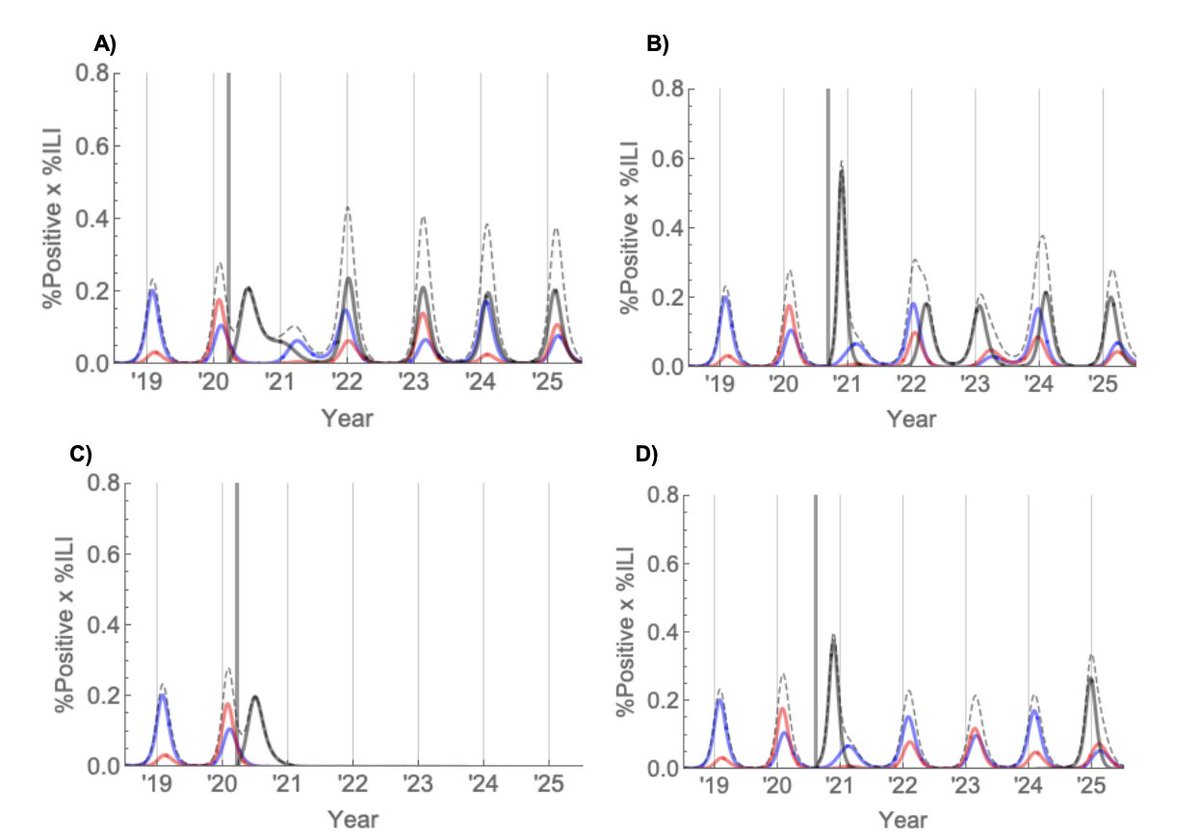
Complex networks, infectious diseases, data science || Science is what you understand well enough to explain to a computer [D.Knuth]
How to get URL link on X (Twitter) App



 La mappa mostra una stima del rischio di essere esposti al virus SARS-CoV-2 per provincia, sulla base del numero di persone che partecipano ad un evento. Il rischio è espresso come la probabilità che almeno un individuo positivo sia presente all'evento. 👇
La mappa mostra una stima del rischio di essere esposti al virus SARS-CoV-2 per provincia, sulla base del numero di persone che partecipano ad un evento. Il rischio è espresso come la probabilità che almeno un individuo positivo sia presente all'evento. 👇
https://twitter.com/cosnet_bifi/status/1277905266542104576ci sono diversi metodi che cercano di inferire la data di insorgenza dei sintomi usando la distribuzione del ritardo tra sintomi e notifica. In questo lavoro mostriamo che in genere questi metodi non sono sufficientemente accurati e possono introdurre errori non trascurabili.

 In this work we analyzed a large dataset of de-identified CDRs from mobile phone users in Santiago, Chile, and tried to answer the question: do women move differently than men, in the city? tl;dr - Yes, they do.
In this work we analyzed a large dataset of de-identified CDRs from mobile phone users in Santiago, Chile, and tried to answer the question: do women move differently than men, in the city? tl;dr - Yes, they do. 

 Users’ movements between different provinces are now at -30%, on average, w.r.t the baseline. The median of users’ movements on connections within the same region has increased to -27%. Movements on connections between provinces of different regions have increased to -60%.
Users’ movements between different provinces are now at -30%, on average, w.r.t the baseline. The median of users’ movements on connections within the same region has increased to -27%. Movements on connections between provinces of different regions have increased to -60%. 

 Allo stato attuale, il modello desume che circa l'8% della popolazione italiana sia stato contagiato nel corso degli ultimi 3 mesi. Ci sono grandi variazioni regionali: nel Nord Italia il numero dei contagiati è probabilmente superiore al 10% mentre nel Sud è inferiore al 4%.
Allo stato attuale, il modello desume che circa l'8% della popolazione italiana sia stato contagiato nel corso degli ultimi 3 mesi. Ci sono grandi variazioni regionali: nel Nord Italia il numero dei contagiati è probabilmente superiore al 10% mentre nel Sud è inferiore al 4%. 


https://twitter.com/m_starnini/status/1255871066184069120Oggi, il comitato scientifico replica a queste critiche, mostrando come siano basate su errori grossolani. Si potrebbe chiuderla qui, magari con una correzione all'articolo che riportava questi errori. Gli articoli del @nytimes spesso vengono corretti in seguito a verifiche.

https://twitter.com/kevin/status/1249431286659174400
 The current standing of R by region is shown here. Lazio and Piedmont still on the edge of R=1. Veneto looks solid under control. Code available here: github.com/micheletizzoni…
The current standing of R by region is shown here. Lazio and Piedmont still on the edge of R=1. Veneto looks solid under control. Code available here: github.com/micheletizzoni… 

 The above charts refer only to Northern Italy. These numbers are not comparable to any past flu season. Before jumping to conclusions, take a closer look at the chart below: it's updated to the week 4 of 2020, which means January. Data is still missing.
The above charts refer only to Northern Italy. These numbers are not comparable to any past flu season. Before jumping to conclusions, take a closer look at the chart below: it's updated to the week 4 of 2020, which means January. Data is still missing. 


https://twitter.com/mtizzoni/status/1233446208301129729
 Alcuni ricercatori dell'Università di Toronto lo hanno fatto, pubblicando i risultati qui: medrxiv.org/content/10.110… [attenzione non è ancora un studio peer-reviewed]. Tra gli autori: @DFisman @AshTuite (2/n)
Alcuni ricercatori dell'Università di Toronto lo hanno fatto, pubblicando i risultati qui: medrxiv.org/content/10.110… [attenzione non è ancora un studio peer-reviewed]. Tra gli autori: @DFisman @AshTuite (2/n)
https://twitter.com/l_gajo/status/1100894358746877953Uno dei problemi principali è che lo studio non riporta nessun errore associato alle stime di impatto, come invece dovrebbe fare qualsiasi serio studio statistico. Ma il metodo usato - Synthetic Control - consentirebbe di ottenere delle stime con un intervallo di confidenza.